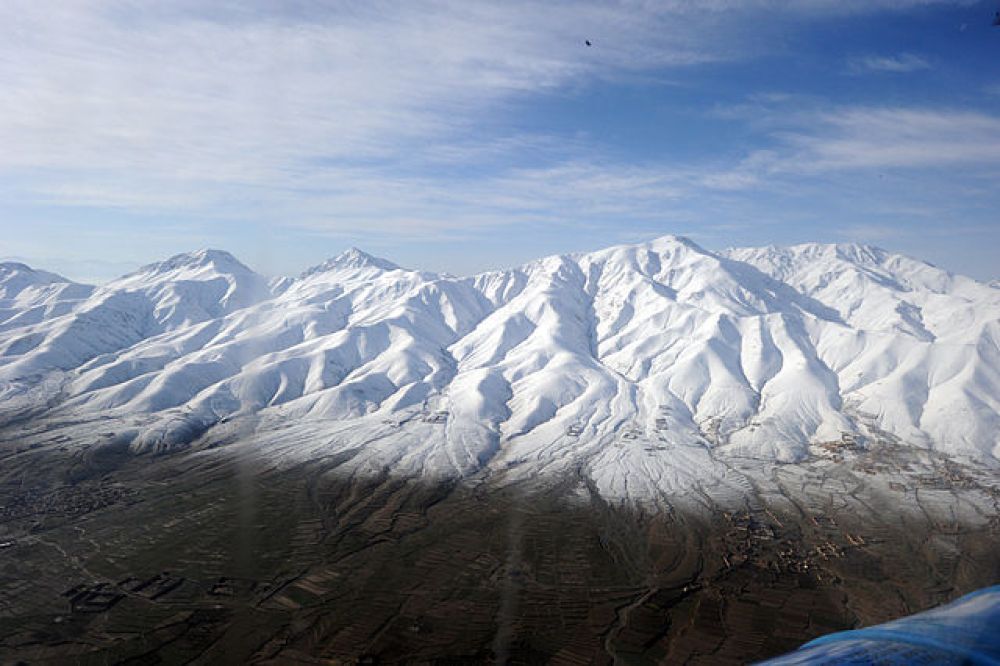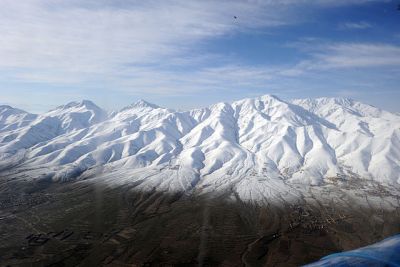

The Ghazni Citadel, also known as the Ghazni Fortress, is a historical site located in the heart of Ghazni city. It dates back to the 13th century when Ghazni was a flourishing center of the Islamic civilization during the Ghaznavid Empire. Visiting this citadel offers a unique glimpse into Afghanistan's rich past. The fortress has witnessed many historical events and has been a silent spectator to the rise and fall of various empires. While much of the citadel has suffered damage over time, restoration efforts have been made to preserve its remaining structure. As visitors walk through the ruins, they can imagine the grandeur that this citadel once held. The high walls and bastions offer spectacular views of the surrounding city and countryside. Exploring the citadel thoroughly requires imagination and an interest in history, as many features are no longer intact.
The Mausoleum of Sultan Mahmud of Ghazni is a revered site that serves as the final resting place for one of the most famous rulers of the Ghaznavid Empire, Sultan Mahmud. This historical figure was known for his military campaigns and patronage of the arts, and his mausoleum is a testament to his legacy. The mausoleum itself is an architectural marvel, with intricate brickwork and a unique design that reflects the Persian influences of the time. Visitors can observe the atypical conical dome and the well-preserved Kufic inscriptions that adorn the outer walls. Inside, the atmosphere is solemn and introspective, providing a space for quiet contemplation. Exploring the mausoleum and its surroundings not only offers insight into the region's cultural heritage but also provides an opportunity to pay respects to one of Afghanistan's historical figures. The site is usually peaceful, allowing guests ample time to appreciate the artistry and importance of this monument.
The Minarets of Ghazni stand as a silent commemoration of Ghazni's golden era when it was referred to as the 'Bride of the Islamic world.' These towering structures were once part of a grand mosque complex and now serve as a public park where visitors can stroll amidst history. The minarets themselves are beautifully crafted, rising high above the grounds with intricate brick designs that make them a photographer's dream. The park around the minarets provides a tranquil setting where guests can relax, enjoy a picnic, or simply take in the historical significance of the area. As remnants of the 12th century, the minarets bear witness to the architectural prowess and cultural wealth of the time. They have been partially restored to ensure their preservation for future generations. Visitors can spend time reading the informational plaques that detail the history and significance of the site while admiring the craftsmanship that has withstood the test of time.
The Museum of Islamic Art in Ghazni is a cultural haven for those seeking to understand the artistic heritage of the region. The museum houses a collection of artifacts that span several centuries, showcasing the evolution of Islamic art in Afghanistan. From ceramics and metalwork to textiles and manuscripts, the museum's exhibits provide a comprehensive look at the skills and creativity of Afghan artisans. Each piece tells a story, whether it be of trade, conquest, or daily life, and visitors can spend hours delving into the history behind the objects. Expert guides are available to offer detailed explanations, which enhances the educational experience. The museum is an essential stop for anyone interested in the interplay between history, religion, and art in shaping the identity of Ghazni and its people. It is a place of learning and reflection, where the artistic achievements of the past are honored and preserved.
Embark on a cultural journey through the streets of Old Ghazni, where ancient history meets present-day life. A guided tour can lead visitors through narrow winding lanes, past traditional bazaars, and into the heart of the city's rich historical tapestry. The tour focuses on the preservation of cultural heritage amidst modern challenges, and includes stops at significant landmarks including mosques, schools, and residential areas that show the architectural styles of different eras. Throughout the walk, guides share stories of Ghazni's illustrious past as a center of learning and trade, and its strategic importance in regional politics through the ages. Participants will have the opportunity to interact with the local community, gaining insights into their daily lives and customs, and potentially visiting artisans at work, creating crafts just as their ancestors did centuries ago. This tour offers a deeper understanding of the complex layers of history and culture that define Ghazni, making it a must for any culturally-curious visitor.
Afghan cuisine is marked by its rich flavors and varied influences, and there is no better way to experience it than by participating in a traditional cooking class. In Ghazni, visitors have the unique opportunity to join local chefs or home cooks who share their culinary secrets and teach the art of preparing authentic Afghan dishes. During the class, participants learn to cook staples such as Kabuli Pulao, a fragrant rice dish with carrots, raisins, and lamb, or Bolani, a type of stuffed flatbread. Such sessions often include a trip to the market to select fresh ingredients, followed by hands-on instruction in a traditional kitchen setting. The culmination of the class is a communal meal, where everyone can enjoy the fruits of their labor in a hospitable and friendly atmosphere. This culinary experience provides not just a taste of Afghan cuisine but also an appreciation of the culture and traditions that are intricately woven into the country's food.
Situated on the outskirts of Ghazni city is the Victory Hill Monument, a site dedicated to the memory of those who have fought for Afghanistan throughout its history. This hilltop monument offers panoramic views of the surrounding landscape and serves as a place of remembrance and reflection. A hike to Victory Hill is both a physical and historical journey, as visitors ascend the path that leads to the summit. Along the way, informative markers and guides are available to explain the significance of this site and the events that led to its creation. At the top, the hill offers a serene environment where hikers can take a moment to appreciate the natural beauty of the area, as well as contemplate the resilience of the Afghan people. The hike is not overly strenuous, making it accessible for most visitors, and it presents an opportunity to connect with the land and its history in a uniquely personal manner.
Band-e Sultan Dam, located in the picturesque outskirts of Ghazni, is more than just a source of water; it is a popular local retreat for families and tourists alike. The dam's reservoir offers a tranquil escape from the hustle and bustle of city life, with opportunities for picnicking, fishing, and boating on its calm waters. The surrounding landscapes are characterized by their rugged beauty, with rolling hills and traditional villages dotting the horizon. Visitors can spend a day at Band-e Sultan basking in the serenity of the environment, perhaps even catching glimpses of local wildlife. The dam also plays a crucial role in the region's agriculture, and guided tours can provide insight into how it benefits the community. Whether seeking a peaceful place to relax or interested in the area's ecological and agricultural significance, Band-e Sultan Dam is a worthwhile destination for a day trip.
The Qara Bagh Bazaar is a bustling marketplace located in the Ghazni Province, offering an authentic Afghan shopping experience. This traditional bazaar is a maze of stalls and shops selling everything from handmade rugs and intricate textiles to spices, fresh produce, and local crafts. Visitors to the bazaar can fully immerse themselves in the vibrancy of Afghan commerce, engaging with merchants and observing the daily interactions that define the local economy. Bargaining is a common practice, and savvy shoppers can negotiate great deals on unique items. Exploring the bazaar is not only about shopping; it's about soaking up the atmosphere, tasting street food, and witnessing the rich tapestry of life in this part of Afghanistan. A trip to Qara Bagh Bazaar is an excellent way to support local artisans and farmers while gaining a deeper understanding of the region's culture.
The art of calligraphy holds a place of honor in Islamic culture, and Ghazni is no exception. Workshops offered in the city allow beginners and enthusiasts to learn the delicate strokes and techniques of Afghan calligraphy. Participants work with skilled instructors who introduce them to the traditional tools—such as bamboo pens (qalams), inks, and handmade papers—and guide them through the process of creating beautiful script. These workshops might also delve into the historical significance of manuscript production and the role it played in preserving knowledge and culture. The experience is both educational and artistic, providing a meditative space for personal expression. By the end of the workshop, visitors will have their own piece of calligraphy to take home as a memento and possibly a newfound appreciation for this enduring art form.
